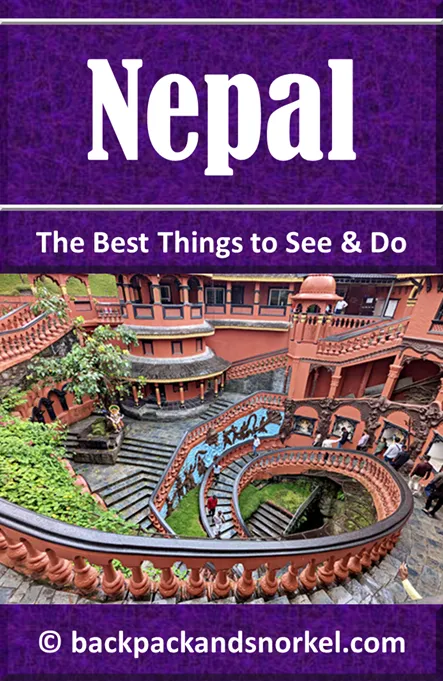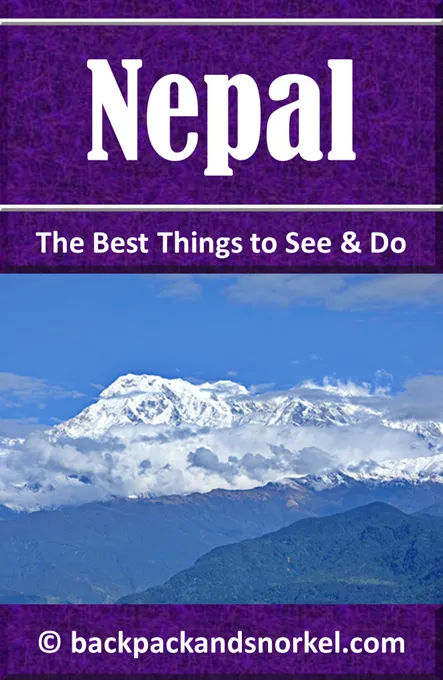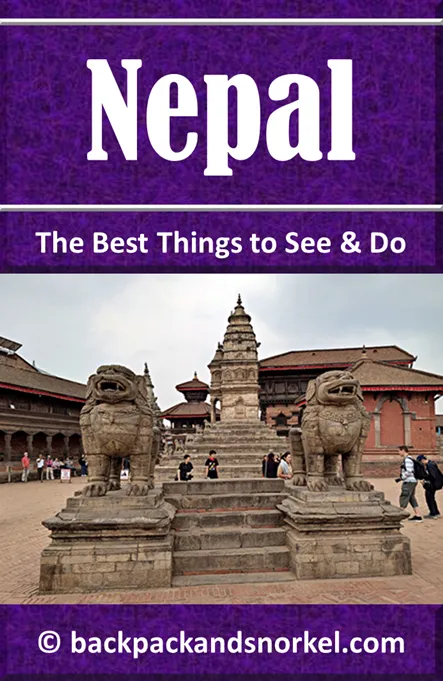Immerse Yourself in Art History: National Art Museum in Durbar Square - Nepal Purple Travel Guide
(map, reviews)
This is Premium Content! To access it, please download our
Backpack and Snorkel Purple Travel GuideThe National Art Museum was established in 1960 by Nepal's Department of Archaeology, and officially inaugurated by Bishweshwar Prasad Koirala, Nepal’s first democratically elected Prime Minister and leader of the Nepali Congress.
The museum’s primary aim is to preserve and exhibit traditional Nepalese paintings and sculptures. It houses a collection that includes Paubha paintings (Nepalese religious scroll paintings), Tantric cloth paintings, manuscripts and chronicles dating as far back as the 11th century, and statues and icons made of bronze, brass, stone, and wood.
The National Art Museum is located inside the historic Simhadhwaka Durbar, which means ‘Lion Gate Palace’ and it got its name from the iconic pair of stone lions that guards its entrance.
The building was originally erected in 1698 by King Bhupatindra Malla, one of Bhaktapur’s most visionary Malla rulers. It was called Malatichwok at that time.
Locals often refer to the palace as Simhadhwaka Layaku, with ‘Layaku’ being a Newari word that translates to ‘palace courtyard’ or ‘palace complex’.
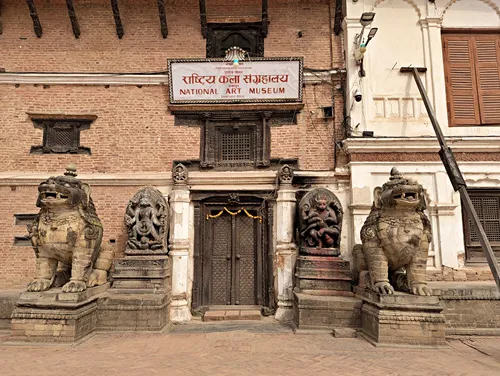
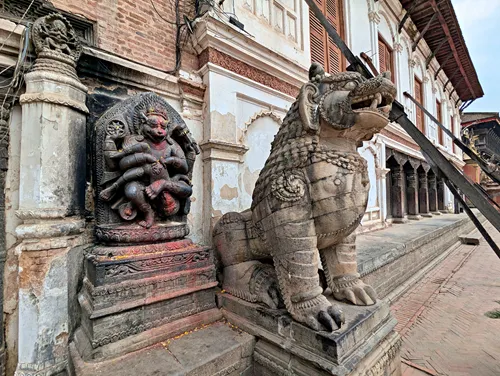

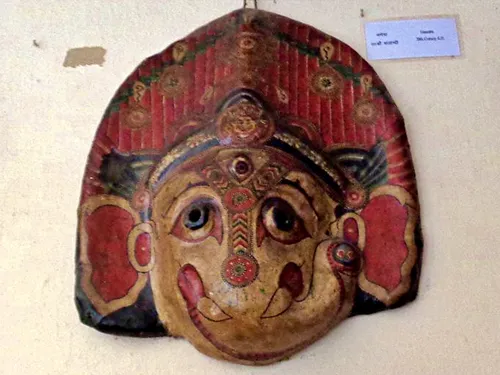
Here at Backpack and Snorkel Travel Guides, we typically promote self-guided walking tours.
But we realize that not everybody likes to walk by themselves in a foreign city. So, just in case that you rather go with ab guide: NO PROBLEM! Please see the Viator tours below.
free GuruWalk tours
paid Viator tours
What You Find Inside the National Art Museum
Before entering the museum, you will see:
the iconic stone lion pair. Stone lions in front of royal palace entrance in Nepal are potent symbols of royal power, divine protection, and a continuation of ancient architectural and cultural traditions. They are not merely decorative but hold deep significance within the socio-religious context of Nepal.
On the left side of the entrance door, you see a statue of Hanuman Bhairava. Hanuman is the monkey god known for his strength, devotion, and service to Lord Rama. Bhairava is a fierce and powerful manifestation of Lord Shiva, associated with destruction, time, and protection. Hanuman Bhairava is a distinctive Newari deity representing a powerful guardian that combines the strengths of Hanuman and the fierce nature of Bhairava, holding a significant place in the religious and cultural landscape of Bhaktapur.
On the right side of the entrance door, you see a statue of Narasimha. Narasimha is the fourth avatar (incarnation) of the Hindu god Vishnu. The name literally translates from Sanskrit to ‘man-lion’, as this avatar embodies a part-human and part-lion form. Vishnu incarnated as Narasimha to kill the demon king Hiranyakashipu, who had obtained a boon that made him seemingly invincible. This act restored Dharma (righteousness) on Earth and ended religious persecution. Narasimha is primarily known as the ‘Great Protector’ who defends his devotees from evil and destroys evil forces.
When you enter the museum, you will need to pay Rs150 per person (at the time of writing). The admission ticket allows free entry to the Woodwork Museum, and the Metalwork Museum in Dattatreya Square.
The ground floor features:
stone inscriptions
the 13 masks of Nava Durga (considered sacred and powerful representations of the nine forms of the goddess Durga, along with other important deities for a masked dance tradition primarily celebrated by the Newar community in the Kathmandu Valley)
a statue of the four-armed Ganesha (the four arms represent the four inner attributes of the subtle body: mind (Manas), intellect (Buddhi), ego (Ahamkara), and conditioned conscience (Chitta); Ganesha, in this form, symbolizes the pure consciousness (Atman) that enables these four attributes to function within us)
statues of Shiva, Surya, Kubera, Vishnu, Tara, Ardhanarishwara, and Lakshmi-Narayan
Tantric paintings of e.g. Bhairava in union with his Shakti, Bhairavi, and Mahasambhara in union with Vajravarahi. Though erotic in appearance, these images represent metaphysical concepts of spiritual union and liberation through tantra, common in both Shaivism and Vajrayana Buddhism
The upper floor showcases:
classical paintings from different periods of Vasundhara, Ganesh Shakti, Mahisa Sambhara, Vajra Yogini, Asta Bhairava, Shiva, Krishna Leela, and Madhukaitavabadha
portraits of kings from the Shah dynasty, beginning with Prithvi Narayan Shah, the unifier of Nepal
ancient hand-written scripts
Back to your self-guided tour
Author: Rudy at Backpack and Snorkel
Bio: Owner of Backpack and Snorkel Travel Guides. We create in-depth guides to help you plan unforgettable vacations around the world.
Other popular Purple Travel Guides you may be interested in:
Like this Backpack and Snorkel Purple Travel Guide? Pin these for later:

